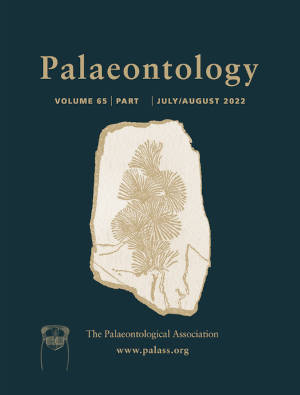Article: How long does a brachiopod shell last on a seafloor? Modern mid-bathyal environments as taphonomic analogues of continental shelves prior to the Mesozoic Marine Revolution
Publication: Palaeontology
Volume:
65
Part:
6
Publication Date:
2022
Article number:
e12631
Author(s):
Adam Tomašových, Diego A. García-Ramos, Rafał Nawrot, James H. Nebelsick, and Martin Zuschin
Abstract
Abstract Carbonate skeletal remains are altered and disintegrate at yearly to decadal scales in present-day shallow-marine environments with intense bioerosion and dissolution. Present-day brachiopod death assemblages are invariably characterized by poor preservation on continental shelves, and abundant articulated shells of brachiopods with complete brachidia are thus not expected to be preserved if not rapidly buried. However, such preservation is paradoxically observed in shallow-water Palaeozoic and Mesozoic brachiopod assemblages. Here, we show that a bathyal death assemblage time-averaged to several millennia (Adriatic Sea) consists of sediment-filled articulated shells of Gryphus vitreus with complete brachidia. Post-mortem age distributions indicate that disintegration half-lives exceed several centuries (c. 500–1700 years). The high frequency of articulated but centuries-old shells (>50%) and the fitting of taphonomic models to post-mortem ages indicate that disarticulation half-life is unusually long (c. 200 years). Rapid sediment filling of shells: (1) inhibited disarticulation, loop fragmentation and colonization by coelobites; and (2) induced precipitation of ferromanganese oxides at redox fronts within shells. Sediment-filled articulated shells, however, still resided at the sediment–water interface as indicated by encrusters and sponges that infested them after death. Sediment-filled shells disintegrated through bioerosion and physical wear when residence in the taphonomically active zone exceeded c. 2000 years. We suggest that the articulation paradox is driven by the Mesozoic Marine Revolution (MMR) that escalated predation, bioturbation and organic matter recycling, all intensifying shell disintegration. A scenario with slow disarticulation in bathyal environments may have lead to preservation of articulated shells in shallow-water assemblages prior to the MMR.
